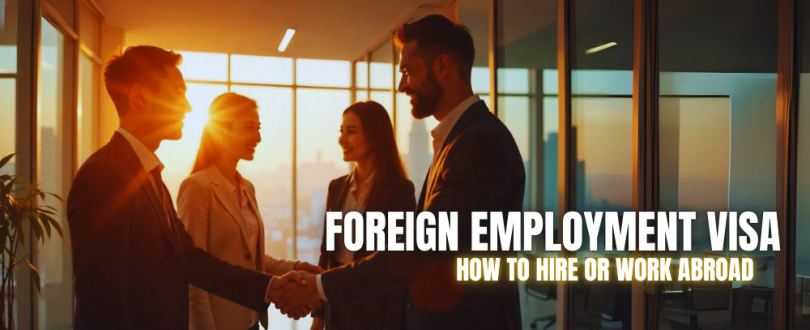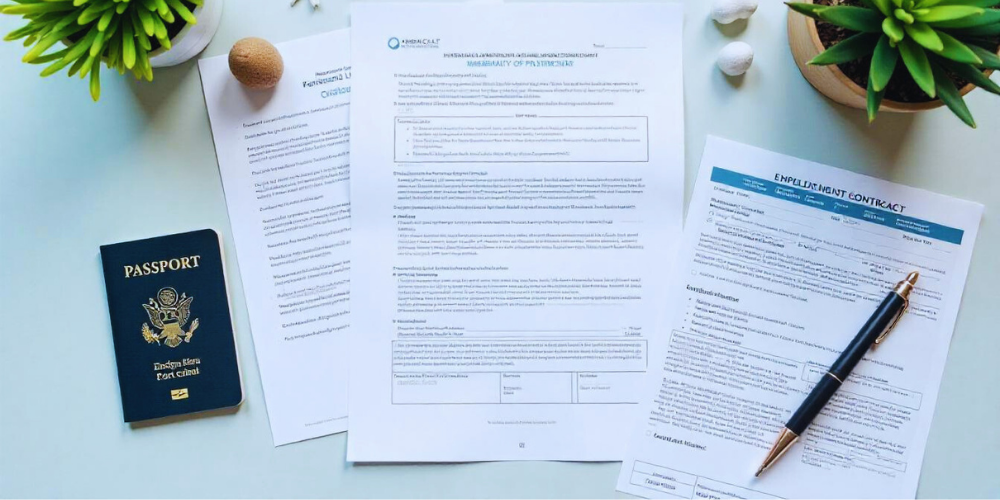
In today’s global economy, hiring foreign workers has become an essential strategy for businesses striving to remain competitive and innovative. The foreign worker visa process allows companies to legally employ talented individuals from outside their national borders. This comprehensive guide will walk you through every critical aspect of the foreign worker visa journey—from eligibility and types of visas to documentation and compliance requirements.
Understanding the Foreign Worker Visa
The foreign worker visa refers to a legal authorization granted by a country to allow a non-citizen to live and work within its borders. These visas are typically sponsored by an employer and are subject to strict requirements and regulations, often differing significantly based on the destination country.
Types of Foreign Worker Visas
Different countries offer various categories of foreign worker visas based on industry, skills, and job duration. Below are some of the most common:
United States: H-1B Visa
The H-1B visa is one of the most well-known nonimmigrant visas in the U.S., designated for skilled professionals in specialty occupations like IT, engineering, finance, and healthcare. Applicants must possess at least a bachelor’s degree or equivalent.
Canada: Temporary Foreign Worker Program (TFWP)
The TFWP allows Canadian employers to hire foreign nationals to fill temporary labor shortages. The program includes streams for high-wage, low-wage, and agricultural workers.
United Kingdom: Skilled Worker Visa
The Skilled Worker visa replaced the Tier 2 (General) visa and enables UK employers to sponsor non-UK residents who possess the necessary qualifications and skills.
Australia: Temporary Skill Shortage Visa (TSS)
Australia’s TSS visa (subclass 482) lets employers address labor shortages by bringing in skilled workers from overseas, provided no local talent is available.
Germany: EU Blue Card
Germany’s EU Blue Card provides an opportunity for highly qualified non-EU citizens to live and work in Germany and other participating EU nations, particularly in STEM fields.
Eligibility Requirements for Foreign Worker Visas
Each visa category comes with specific eligibility criteria, but some common requirements across most programs include:
– A valid job offer from an approved employer
– Educational qualifications or relevant work experience
– Proof of labor market testing (if required)
– Language proficiency, depending on the country
– No criminal record and a clean immigration history
Employer Sponsorship and Labor Market Tests
To obtain a foreign worker visa, employers usually must prove that no suitable local candidates are available. This often requires:
– Labor Market Impact Assessments (LMIA) in Canada
– Resident labor market tests in the UK
– PERM labor certification in the U.S.
Employers must provide evidence of advertising the position locally and justify the hiring of a foreign national.

Step-by-Step Application Process
The process of applying for a foreign worker visa typically follows these steps:
1. Employer Applies for Certification or Sponsorship License
Employers must apply to become certified or licensed sponsors. This includes demonstrating financial capability, legal status, and business legitimacy.
2. Labor Market Testing (If Required)
Before hiring a foreign worker, employers often must advertise the position and attempt to recruit domestically.
3. Job Offer and Contract Issuance
Once a suitable foreign candidate is selected, the employer issues a formal job offer and contract, often including terms of employment, salary, and duration.
4. Visa Application by the Worker
The foreign worker submits a visa application with supporting documents such as educational certificates, professional qualifications, work experience records, and medical certificates.
5. Biometrics and Interview
Most countries require biometric enrollment and an interview at a visa application center or embassy.
6. Visa Approval and Travel
Upon approval, the visa is stamped, and the worker can legally travel and begin employment.
Common Documents Required for a Foreign Worker Visa
While specific documents may vary, the most commonly requested include:
– Valid passport
– Educational degrees and transcripts
– Proof of work experience
– Job offer letter
– Employer sponsorship certificate
– Police clearance certificate
– Medical examination results
– Visa application form and fee payment

Processing Times and Costs
Processing times vary greatly:
– H-1B visa: 3 to 6 months (premium processing available)
– TFWP in Canada: 2 to 10 weeks
– Skilled Worker Visa UK: 3 weeks (outside the UK)
– TSS Australia: 1 to 3 months
Visa fees range from $200 to $2000, depending on the country and service level selected (standard vs. expedited).
Rights and Responsibilities of Foreign Workers
Foreign workers must comply with visa conditions, including:
– Working only for the sponsoring employer
– Not engaging in unauthorized work or self-employment
– Renewing or extending the visa before expiration
– Reporting address changes or job changes to immigration authorities
They are also entitled to:
– Fair wages and workplace protections
– Access to legal redress for mistreatment
– Opportunities for permanent residency (in some cases)
Pathways to Permanent Residency
Many foreign worker visas serve as stepping stones to permanent residency. For instance:
– H-1B holders can apply for a Green Card through employer sponsorship
– Canada’s TFWP can lead to PR through the Express Entry system
– Skilled workers in the UK may be eligible for Indefinite Leave to Remain (ILR)
– Australia’s TSS visa can lead to the Employer Nomination Scheme (subclass 186)
Challenges Faced by Employers and Workers
Despite the advantages, there are several challenges involved:
– Complex bureaucracy and changing policies
– Delays in visa processing
– High costs for employers
– Risk of visa refusal due to documentation errors
– Uncertainty due to political or economic changes
Tips for a Successful Foreign Worker Visa Application
To maximize approval chances:
– Ensure all documents are complete and accurate
– Follow country-specific guidelines strictly
– Work with an experienced immigration consultant or attorney
– Use premium or priority processing where available
– Maintain clear communication between the employer and the employee
Frequently Asked Questions (FAQs)
Q1: Can I apply for a work visa without a job offer?
A: Some visas, like Canada’s Express Entry, allow for application without a job offer.
Q2: How long does the process take?
A: It varies, but most work visas take 3–6 months from start to finish.
Q3: Can I bring my family?
A: Most work visas allow dependents, but their rights to work or study may vary.
Q4: What happens if I lose my job?
A: You usually have a grace period (30–60 days) to find another sponsor or leave the country.
Q5: Are there visa quotas?
A: Yes, especially for H-1B and some EU visas, which are capped annually.
Q6: Do I need an attorney?
A: It’s not required, but hiring one can increase your chances of success.
Conclusion
Navigating the foreign worker visa process requires meticulous planning, documentation, and compliance with immigration laws. Whether you’re an employer seeking international talent or a skilled professional aiming to work abroad, understanding the visa landscape is crucial to success. By staying informed and proactive, both parties can benefit from global employment opportunities.

